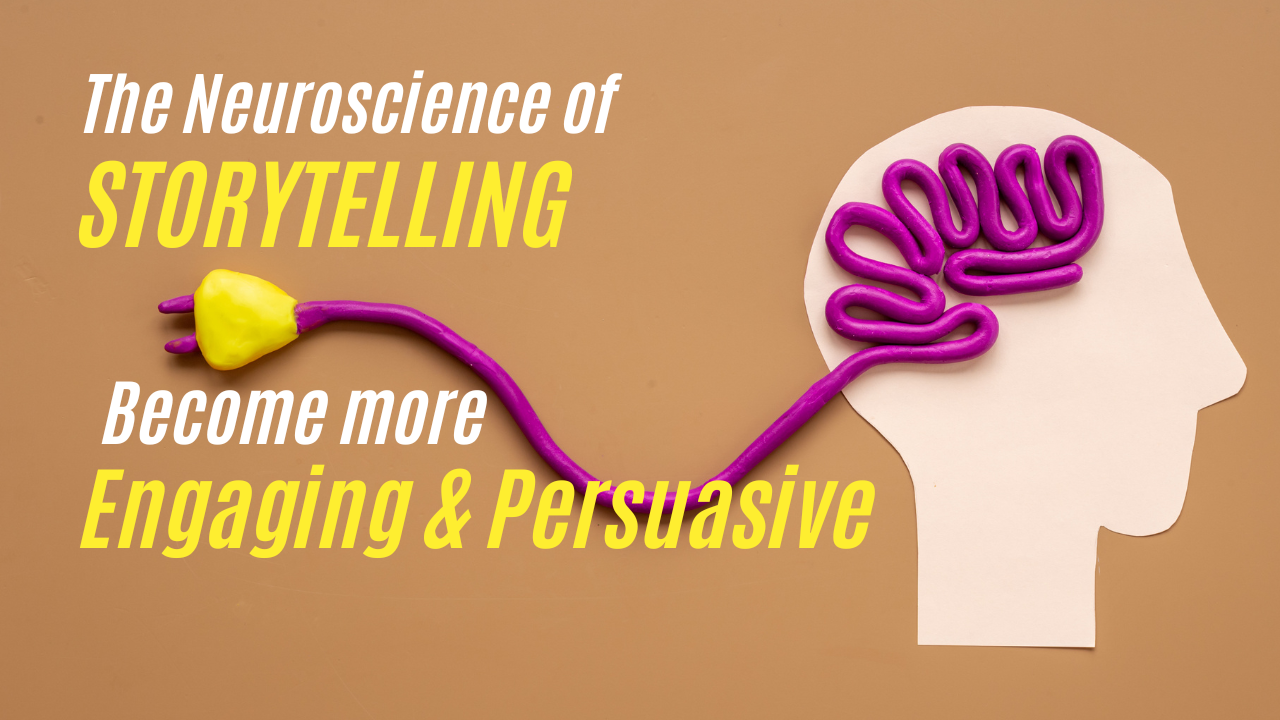It’s a bit of an understatement to say that we are overloaded and overstimulated with information. Our brains are constantly flooded with information and data. This means that standing out and making an impact requires more than just presenting facts. If you want to inspire, influence, and connect with others—whether in a meeting, a keynote, or even a casual conversation—using brain-friendly stories can be a great tool that will help you to become more engaging and persuasive.
Researchers have increasingly recognized that effective communication goes beyond simply sharing information. Facts alone aren’t enough to change minds, especially when people are faced with misinformation or deeply held beliefs.
That’s where storytelling comes in. You see, stories don’t just tap into intellect; they stimulate emotion, create memorable connections, and, most importantly, activate parts of the brain responsible for understanding narratives and experiences. When you are conveying information in any domain, from business to education to science. Stories cut through the noise, they engage people’s emotions, and leave a lasting impression.
The Neuroscience of Storytelling
From a neuroscience perspective, when we hear or read stories, many parts of the brain light up, not just the areas responsible for processing language. Research shows that listening to a well-told story activates parts of the brain involved in sensory experiences and social understanding, including the medial prefrontal cortex (responsible for processing emotions) and the posterior cingulate cortex (linked to reflection and understanding long-term events).
In short, stories help people connect not just with the information, but with the deeper meaning behind it. They create vivid mental simulations where listeners feel like they are part of the experience, making it more likely for them to remember and act on what they’ve heard.
How to Use Storytelling to Engage and Persuade
Here are some actionable strategies for using the neuroscience of storytelling to enhance your communication, engage your audience, and become more persuasive:
1. Start with a Relatable Narrative
People are naturally drawn to stories that resonate with their own experiences. Whether you’re leading a team meeting, presenting to a client, or having a one-on-one discussion, inject a personal or relatable story. For example, if you’re introducing a new initiative at work, instead of diving straight into data or technical details, share a short story about a time you faced a similar challenge or opportunity. It humanizes your message and gives your audience a point of connection.
The key is to make the story relatable and human, not just about the facts. Audiences will often engage more deeply when they can see themselves in your story.
2. Use Emotion to Drive Engagement
Research shows that emotional content in stories activates areas of the brain linked to memory and decision-making. When people feel something, they’re more likely to remember the message and take action.
Incorporate moments in your storytelling that elicit emotions, whether that’s excitement, empathy, or even a sense of urgency. For instance, if you’re pitching an idea, talk about the potential impact your solution could have on people’s lives or the challenges it helps overcome. Be genuine—people can sense when you’re trying to manipulate emotions, so the goal is to engage authentically.
3. Make Your Message Personal and Relatable
First-person narratives are particularly powerful because they make the information personally relevant to the listener. When you share stories about your own experiences, struggles, and successes, people feel a personal connection to you and your message.
An example of this is if you’re trying to inspire your team to take on a tough project, share a story about a time when you faced adversity and overcame it. The authenticity of your experience will resonate more than abstract data or general advice.
4. Incorporate Suspense and Curiosity
This is a particularly powerful principle. People are naturally drawn to what they don’t know. Leveraging suspense, curiosity, or even leaving certain aspects of your story unresolved can help keep your audience engaged. Studies in Neuroscience show this stimulates the brain’s reward centers as people anticipate the resolution or the “reveal” in the story.
You can use this technique in business presentations, too. Instead of starting with the conclusion, walk your audience through a problem-solving journey. Present the challenges first, let them wonder how it will be resolved, and then provide your solution.
One of the reasons storytelling is so effective is that it breaks down cognitive barriers to persuasion. When faced with cold facts or direct arguments, people often become defensive, clinging to their existing beliefs. But stories, particularly emotionally resonant ones, disarm this defensiveness. They engage listeners without triggering resistance because they’re not presented as direct confrontations to their existing viewpoints.
In fact, research shows that people are more likely to remember and act on information presented within a narrative than information presented as pure data. The mental imagery and emotional engagement created by stories make them more likely to be processed deeply and recalled later.
To implement storytelling, look for opportunities where a story could make your communication more impactful. Think about analogies and illustrations. This will help you recall past events that can be used as stories.
Here’s the bottom line when it comes to the brain, persuasion, and influence: People don’t just want to hear what you know—they want to feel something. They want to envision something that helps them. Stories are the bridge that connects information with emotion, making you more likable and relatable and making your message stick long after the conversation ends.

